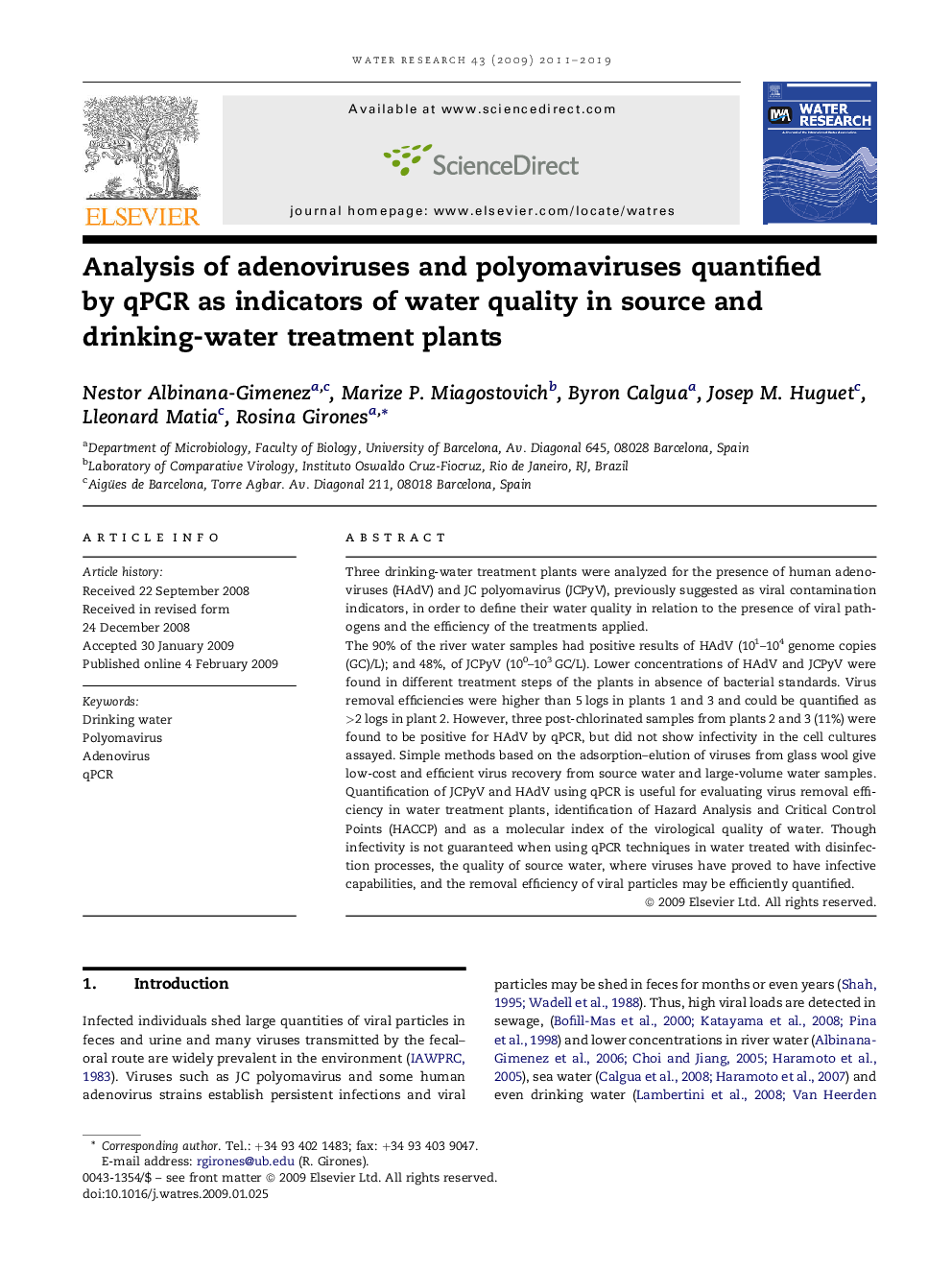| Article ID | Journal | Published Year | Pages | File Type |
|---|---|---|---|---|
| 4484487 | Water Research | 2011 | 9 Pages |
Three drinking-water treatment plants were analyzed for the presence of human adenoviruses (HAdV) and JC polyomavirus (JCPyV), previously suggested as viral contamination indicators, in order to define their water quality in relation to the presence of viral pathogens and the efficiency of the treatments applied.The 90% of the river water samples had positive results of HAdV (101–104 genome copies (GC)/L); and 48%, of JCPyV (100–103 GC/L). Lower concentrations of HAdV and JCPyV were found in different treatment steps of the plants in absence of bacterial standards. Virus removal efficiencies were higher than 5 logs in plants 1 and 3 and could be quantified as >2 logs in plant 2. However, three post-chlorinated samples from plants 2 and 3 (11%) were found to be positive for HAdV by qPCR, but did not show infectivity in the cell cultures assayed. Simple methods based on the adsorption–elution of viruses from glass wool give low-cost and efficient virus recovery from source water and large-volume water samples. Quantification of JCPyV and HAdV using qPCR is useful for evaluating virus removal efficiency in water treatment plants, identification of Hazard Analysis and Critical Control Points (HACCP) and as a molecular index of the virological quality of water. Though infectivity is not guaranteed when using qPCR techniques in water treated with disinfection processes, the quality of source water, where viruses have proved to have infective capabilities, and the removal efficiency of viral particles may be efficiently quantified.
